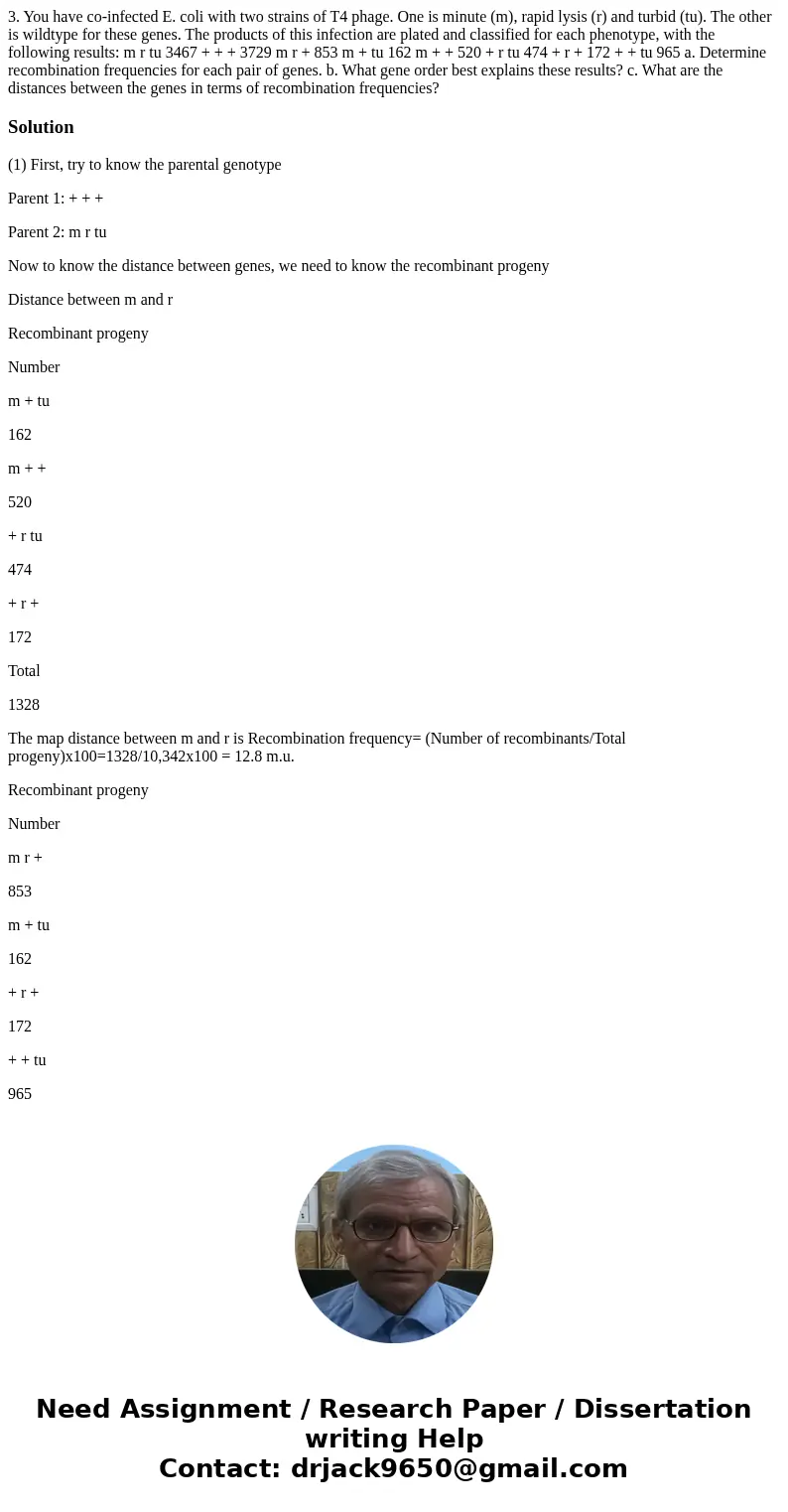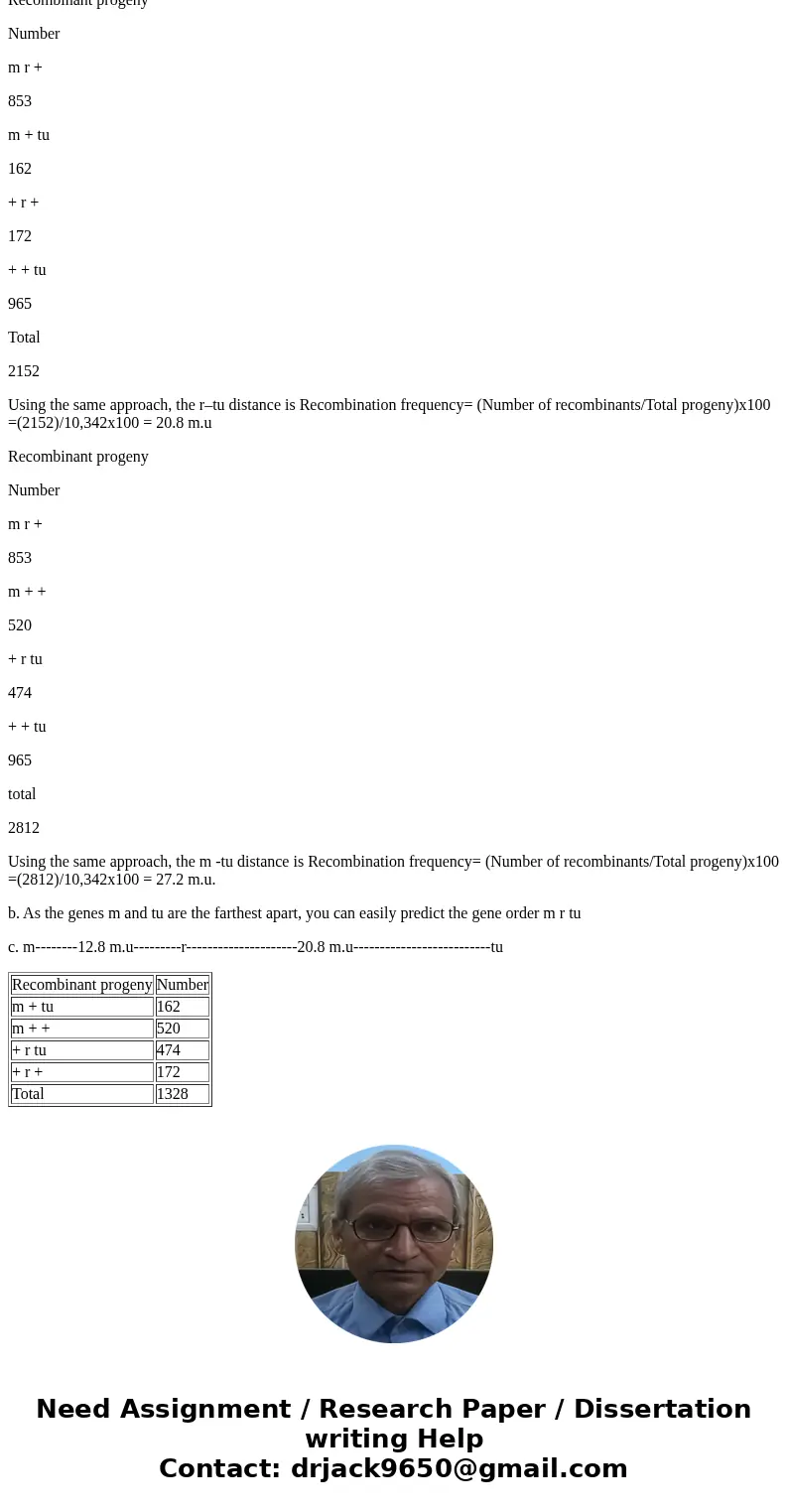3 You have coinfected E coli with two strains of T4 phage On
3. You have co-infected E. coli with two strains of T4 phage. One is minute (m), rapid lysis (r) and turbid (tu). The other is wildtype for these genes. The products of this infection are plated and classified for each phenotype, with the following results: m r tu 3467 + + + 3729 m r + 853 m + tu 162 m + + 520 + r tu 474 + r + 172 + + tu 965 a. Determine recombination frequencies for each pair of genes. b. What gene order best explains these results? c. What are the distances between the genes in terms of recombination frequencies?
Solution
(1) First, try to know the parental genotype
Parent 1: + + +
Parent 2: m r tu
Now to know the distance between genes, we need to know the recombinant progeny
Distance between m and r
Recombinant progeny
Number
m + tu
162
m + +
520
+ r tu
474
+ r +
172
Total
1328
The map distance between m and r is Recombination frequency= (Number of recombinants/Total progeny)x100=1328/10,342x100 = 12.8 m.u.
Recombinant progeny
Number
m r +
853
m + tu
162
+ r +
172
+ + tu
965
Total
2152
Using the same approach, the r–tu distance is Recombination frequency= (Number of recombinants/Total progeny)x100 =(2152)/10,342x100 = 20.8 m.u
Recombinant progeny
Number
m r +
853
m + +
520
+ r tu
474
+ + tu
965
total
2812
Using the same approach, the m -tu distance is Recombination frequency= (Number of recombinants/Total progeny)x100 =(2812)/10,342x100 = 27.2 m.u.
b. As the genes m and tu are the farthest apart, you can easily predict the gene order m r tu
c. m--------12.8 m.u---------r---------------------20.8 m.u--------------------------tu
| Recombinant progeny | Number |
| m + tu | 162 |
| m + + | 520 |
| + r tu | 474 |
| + r + | 172 |
| Total | 1328 |


 Homework Sourse
Homework Sourse